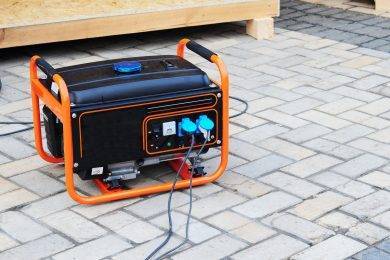Portable generators are great backup sources of power during electrical outages, camping, or for any activity where you need to run tools or appliances away from power access. There are many models and features on the market to choose from. It can be difficult to know which option is right for your electrical needs.
Understanding how portable generators work is the first step to determining which type you should select. Keep reading for some generator basics and the range of functions available.
Portable Generator Basics
A portable generator is a mobile engine that can power different devices. Most of them are gasoline-powered, but there are other options, such as a solar power generator. (To learn more about the advantages of these, take a look at this Bluetti AC200P review.)
Portable generators vary in size. Small ones are usually around 1,000 watts, while the largest generators can surpass 15,000 watts capacity.
Note that standby generators are much larger and can power entire homes. These systems are permanent installations–you cannot move them around like portable generators.
Portable generators crank much like a lawnmower or other small engines. Some have push-button starts, but most have pull cords for cranking.
Most newer generators have a range of outlets on their panels for powering different devices. But almost all of them have one or two standard AC outlets.
It is important that you only operate generators outdoors and away from any doors, windows, or other home openings. Like other engines, generators emit carbon monoxide. This is colorless, odorless, and tasteless gas that can cause serious health problems or even death.
Advantages of Portable Generators
Many businesses cannot operate without power. You can run lights, appliances, computers, internet equipment, and a variety of tools with a portable generator. Apart from emergencies, some businesses rely on them to run lights for night jobs.
Besides being a nuisance, power outages at your home can cause a lot of problems. One is food that has spoiled as a result of inoperable refrigerators or freezers. You also can use generators to run sump pumps, well water motors, or other necessary equipment to keep your home safe and running smoothly.
Portable generators also are handy for camping or other outdoor excursions. People use them for tailgating, beach trips, or any event where you need electronics but don’t have access to a power supply.
Determining Wattage Requirements
Calculating what size generator you need can be a little tricky. First, add up the wattage of all the appliances you need to operate simultaneously. Next, you need to factor in startup wattage, which is about 2 to 3 times the amount of an appliance’s running wattage.
Especially for larger appliances, it may be worth doing further research to know exactly what their startup requirements are. Most refrigerators, for instance, need only a few hundred watts to run but could require over 1,000 to start up.
You Are Ready to Buy a Portable Generator
Now that you have an idea about how generators work and what features are available, you can select one that is suitable for your home or work projects. Remember that the best portable generator is that one that can meet all your power needs without going overboard.
We hope this information on portable generators was helpful to you. Be sure to take a look at our other posts on all things energy. We cover everything from fossil fuels, nuclear power, and renewables to industry trends and international energy news.











